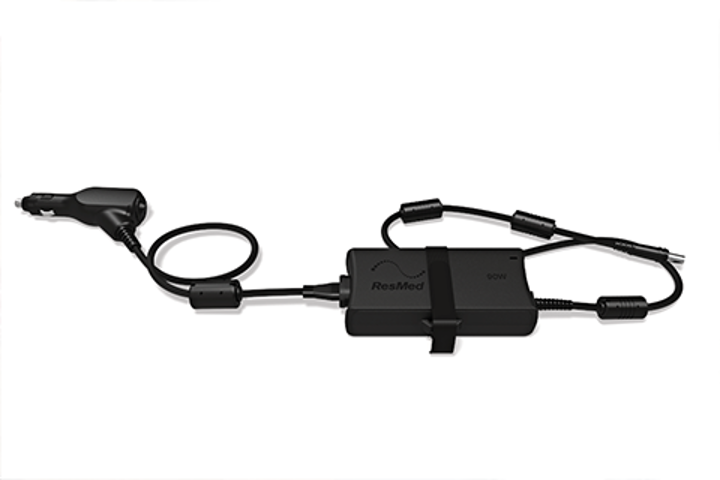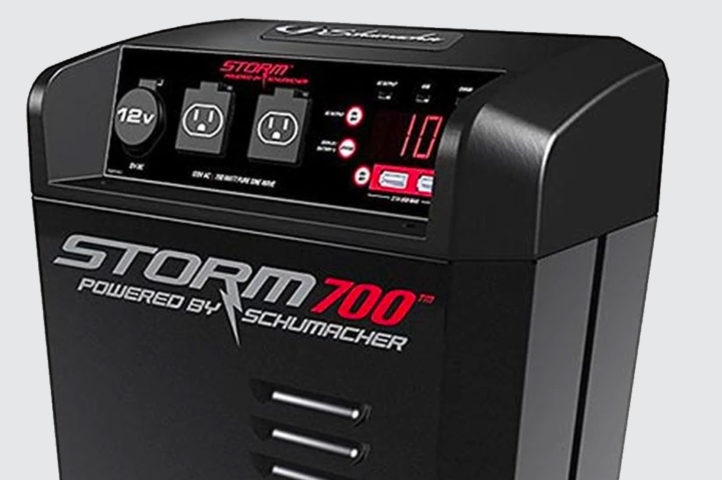One of the more common topics discussed among RVers who enjoy boondocking is how to power a CPAP machine with a limited power source. CPAP machines and other electric-powered medical devices are essential to the health and well being of those who need them. For RVers not hooked up to electricity, using a CPAP machine has presented a particular challenge, but and it shouldn’t prevent anyone from enjoying the RV or camping lifestyle.
We’ve put together some tips for how you can power your device without an electrical hook-up.
What is a CPAP machine?
Short for Continuous Positive Airway Pressure, CPAP therapy is a common treatment for Obstructive Sleep Apnea (OSA). A CPAP machine uses a hose and mask or a nose piece, to deliver constant and steady air pressure into the user’s airways. People with obstructive sleep apnea rely on their devices to help them breathe during sleep. The most common issues among CPAP users include a leaky mask, trouble falling asleep, stuffy nose and a dry mouth. As I’ve experienced on the road while boondocking, power interruptions have become a detriment to my regulated CPAP therapy, forcing us to come up with a viable remedy.

Photo: Shutterstock
CPAP Machine Requirements
Using a CPAP machine in your RV requires energy, either from electricity, batteries or an alternate power source. If you’re camping without an electric hook-up, you will need to calculate your CPAP machine’s daily energy usage based on the back label. Add in humidification if required. Anytime an appliance creates heat or disperses moisture, it will require more energy.

Powering a CPAP machine via am RV Energy Management System

Face it, RV batteries are not created equal.
Your travel trailer or fifth wheel is most likely equipped with basic lead acid batteries. If you don’t know this already, you will need to be conscious about not allowing your RV house batteries to drop below a 50% charge, as lead acid batteries will develop a lower voltage as they discharge.
Some CPAP machines may be affected by the lower voltage and not function properly. I have experienced constant interruptions using our former lead acid batteries. And there’s always the responsibility of continued monthly battery maintenance and servicing.
One solution is to switch out your lead acid batteries for lithium ion batteries. While lithium ion batteries are a pricier option, they are much more versatile, and we highly recommended them.

Our Battle Born Lithium Ion Batteries can drop to 10% state of charge while maintaining a consistent 13 volts. This provides the perfect voltage for using my CPAP machine. Lithium ion batteries also require no maintenance or service, and can last up to 15 years. Since we’ve installed our lithium ion batteries, I’ve experienced no interruptions in my CPAP therapy while RV camping with CPAP off the grid.
CPAP Camping Power Supply Options
Option 1: Inverter
The most common option for powering your CPAP machine is by using an AC current at 120 volts. When using 120-volt service, you’ll need an inverter to energize the wall outlet that your machine is plugged into. The inverter changes power from your RV’s 12-volt battery to 120 volts, and it will require enough wattage to provide the right amount of electricity to the device. Check the label on the machine to determine the appropriate size inverter for your CPAP device. The inverter is not the most efficient method to power your machine, but it is the most common.
Option 2: Direct Current (DC)
A second option is to use direct current (DC). This method is less complex but requires wiring a 12-volt outlet into you RV to use a DC cable for power. The outlet needs to be done in accordance with electrical specs for your specific RV. You’ll need to have the correct size wire and fuse, but they’re similar to cigarette lighter receptacles and can be purchased from Amazon or an auto parts store.
You’ll also need to purchase a DC cable. They’re available all over, but they are brand and machine specific, so you’ll need to research which cable matches your CPAP machine. In our opinion, this method is the most efficient way to power a CPAP machine.

Option 3: Portable Battery Pack
The third and least common method is to power the CPAP machine with a portable battery pack, which also need to match your machine specifically. They can be purchased from Amazon or most Durable Medical Goods suppliers. In most cases, the battery pack or portable power supply for CPAP machine provides enough energy for two nights of usage. Of course, this also depends on humidification requirements, which can use up the battery faster.
This method requires you to recharge the battery pack with electricity, which makes it more difficult for people who like boondocking unless you have another means of recharging them.
Option 4: Generator
The last option is to power your entire RV with a generator. You can use factory-installed generator or generators like our portable 2000 watt inverter generators pictured below.

The generator method has zero drain on your batteries, and it assists in recharging your battery bank. Factory installed generators are easy to use–you just flip a switch.
Less-expensive portable generators will require you to carry fuel in an approved external container, and they take a bit of tiem to set up. You might also need adapters to allow your 30 or 50-amp power cord to connect to the generator.
For short stays in private areas where the noise won’t bother your neighbors, a generator may be your best option.
But if your plan is to stay overnight in an area populated by other RVs and campers, your generator noise might bother your neighbors at night. Generators also require monthly service and maintenance for flawless operation.
Final Thoughts
In closing, we hope this helps RVers who are dependent on medical devices decide which power option is best for their RV. Requiring a CPAP machine shouldn’t deter you from staying outside of traditional campgrounds or RV parks with electric hookups. It simply takes a little research, time and money to allow you to enjoy RVing off the grid or boondocking (yes, at Walmart too!) while taking care of your respiratory health.
This article was written by Dan & Lisa Brown of Always On Liberty.







